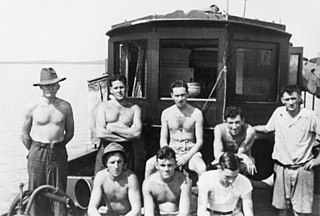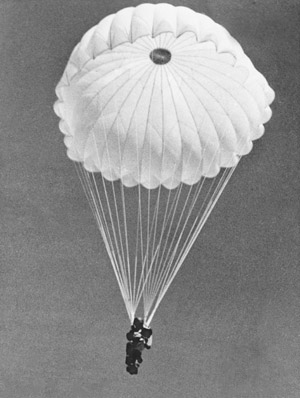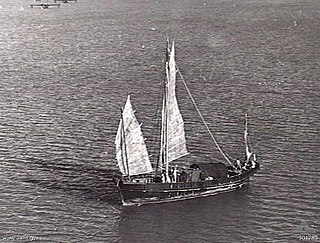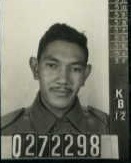Related Research Articles

Operation Jaywick was a special operation undertaken in World War II. In September 1943, 14 commandos and sailors from the Allied Z Special Unit raided Japanese shipping in Singapore Harbour, sinking six ships.

Z Special Unit was a joint Allied special forces unit formed during the Second World War to operate behind Japanese lines in South East Asia. Predominantly Australian, Z Special Unit was a specialist reconnaissance and sabotage unit that included British, Dutch, New Zealand, Timorese and Indonesian members, predominantly operating on Borneo and the islands of the former Dutch East Indies.

No. 200 Flight was a Royal Australian Air Force special duties flight of World War II. The flight was formed in February 1945 to support the Allied Intelligence Bureau (AIB) and saw action over Borneo and the Netherlands East Indies (NEI) from March that year until the end of the war in August. No. 200 Flight was disbanded in December 1945.
The Allied Intelligence Bureau (AIB) was a joint United States, Australian, Dutch and British intelligence and special operations agency during World War II. It was responsible for operating parties of spies and commandos behind Japanese lines in order to collect intelligence and conduct guerrilla warfare against Japanese forces in the South West Pacific. The AIB was formed in June 1942 to coordinate the existing Allied propaganda and guerrilla organisations. The first controller of the AIB was Colonel C. G. Roberts. At its peak the AIB contained men from ten individual services and controlled or coordinated eight separate organisations. The role of the AIB was to obtain information about the enemy, "to weaken the enemy by sabotage and destruction of morale and to lend aid and assistance to local effort to the same end in enemy territories." One member of the AIB was Alfred Deakin Brookes, who went on to become the first head of the Australian Secret Intelligence Service in May 1952.
The Far Eastern Liaison Office (FELO) was a Second World War Propaganda and Field Intelligence unit set up under the orders of the Allied Land Commander, General Sir Thomas Blamey, on 19 June 1942. FELO became one of four sections of the Allied Intelligence Bureau (AIB) which was established on 6 July 1942 to control and co-ordinate the activities of various intelligence organisations that had been set up after the outbreak of war with Japan.
Netherlands East Indies Forces Intelligence Service (NEFIS) was a Dutch World War II-era intelligence and special operations unit operating mainly in the Japanese-occupied Netherlands East Indies (now Indonesia).

HMAS River Snake was a Snake-class junk built for the Royal Australian Navy during the Second World War. She was launched in 1945 and commissioned into the Royal Australian Navy on 19 February 1945. She was used by the Services Reconnaissance Department (SRD) and was paid off on 2 November 1945, before being handed over to the British Civil Administration in Borneo.
Operation Opossum was a World War II raid undertaken by Australia's Z Special Unit in 1945 on the island of Ternate near Borneo to rescue the Sultan of Ternate, Muhammad Jabir Syah.
Operation Adder was a military operation conducted by Australia's Services Reconnaissance Department in Timor during World War II in August 1944. A party consisting of two Australian soldiers, Captain John Grimson and signaller Ernest Gregg, and three Portuguese Timorese, was dropped on Timor.
Operation Cobra was a military operation by Australia's Services Reconnaissance Department during World War II in Timor in 1944. A team of five soldiers were inserted on to Japanese occupied Timor
Operation Lagarto was an Australian military operation in Timor during World War II in 1943. It was run by the Services Reconnaissance Department. The Naval component of the mission was named Operation Mosquito. The operation was ambushed and captured. Japanese intelligence used information from the mission to lure other Australian commandos to Timor where they were captured and killed, notably Operation Cobra (Timor), Operation Sunlag and Operation Suncob.
Operation Suncob was a military operation by the Australian Army in Timor in 1945 to investigate what happened to Operation Cobra. It consisted of Captain P. Wynne and Corporal J.B. Lawrence, both AIF and Z Special Unit. They were inserted into Timor on 2 July 1945 despite the Services Reconnaissance Department not hearing back from Operation Sunlag which had been undertaken shortly prior. Both men were captured and tortured by the Japanese.
Operation Lizard was the name given to a series of operations undertaken in Portuguese Timor by Australian troops in World War Two using Hoehn military folboats to get from the vessel to the island and return.
Operation Tiger was a World War II operation by the Netherlands East Indies Forces Intelligence Service on the island of Java. Almost all ended in disaster for the Allies.
Operation Walnut was a military operation conducted by the Allies, notably the Netherlands East Indies Forces Intelligence Service, on the Aroe Islands during World War II. It took place in three phases:
Operation Lion was formed to establish an intelligence centre on central Sulawesi. First Lieutenant I.H.T. Hees, 1st Cl. B. Belloni, a telegraphist and Sailor J.L. Brandon comprised the party which left Darwin by the prahu Somoa on 24 June 1942, to land near Wotoe, 60 kilometres (37 mi) west of Malili, on Celebes. Lieutenant Hees had previously worked as an engineer for the department of public works and it was hoped he could contact one of his "mandoers" (overseers). The party was contacted by radio on 7 November 1942, however their signals were too weak to be received. On 14 December 1942, two Dutch NCO's were in Darwin awaiting movement to LION party, but it was suspected that LION had come under Japanese control they were not dispatched.
Operation Sunfish was a military operation by Allied troops in April 1945. It involved the battleships HMS Queen Elizabeth and French battleship Richelieu. Their aircraft carried out a photo reconnaissance sweep of the area around Port Swettenham, 200 miles north of Singapore, on 14–16 April, before concluding the raid with an attack on Emmahaven and Padang. It had its origins in the proposed Operation Sounder.

Operation Binatang was an Australian covert operation conducted by the Services Reconnaissance Department (SRD) during World War II. An agent of Z Special Unit was to be landed on the north coast of Java to recruit more men who would give active assistance to the allied cause. The operation was conceived in January 1944 but owing to the shortage of available submarines and the priority of Operation Hornbill it was delayed. When Hornbill was aborted arrangements were made for the mission to commence in February 1945.
Operation Mackerel was an operation carried out in World War II by the Australian Imperial Force. Three men went ashore on Java in September 1942 to collect information. They were accompanied by two members of the Dutch submarine K12. The group had difficulty during the landing as the landing boats capsized in the heavy surf, a member of group injured his back and much of the gear was lost. The mission had to be abandoned early as the captain of the submarine resurfaced in full view of the coastguard that was in communication with the Japanese. The leader of the mission deemed it to be unsafe so decided to evacuate the party.
Operation Starfish was an operation by Australian special forces in World War II on the island of Lombok.
References
- Dennis, Peter; Grey, Jeffrey; Morris, Ewan; Prior, Robin; Bou, Jean (2008). The Oxford Companion to Australian Military History (Second ed.). Melbourne: Oxford University Press. ISBN 978-0195517842.
- Powell, Alan (1996). War by Stealth: Australians and the Allied Intelligence Bureau 1942–1945. Carlton South, Victoria: Melbourne University Press. ISBN 0-522-84691-2.